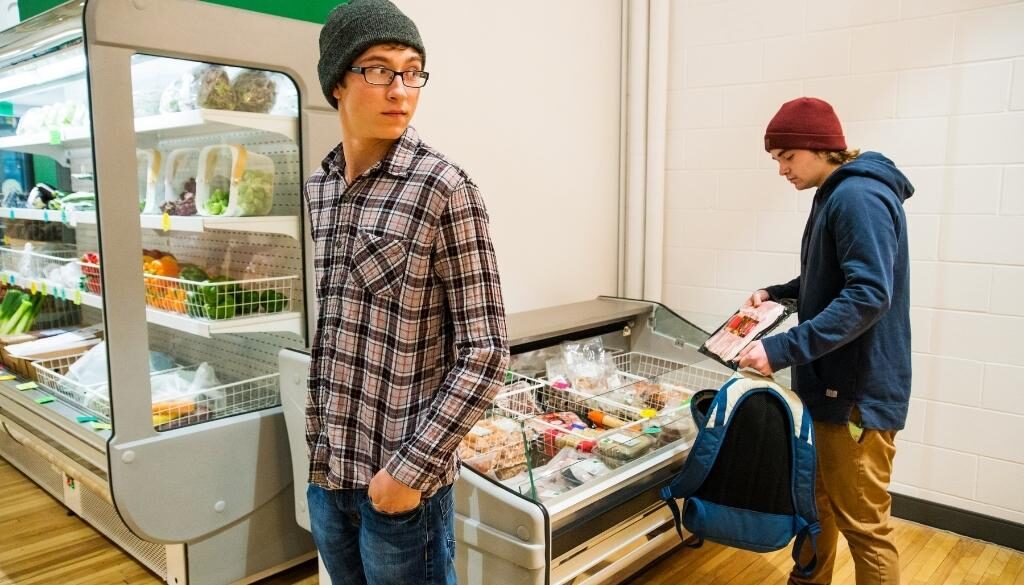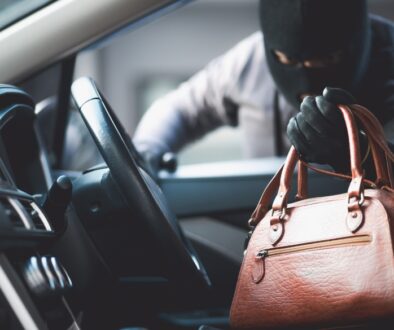Shoplifting: Why People Steal and How To Prevent It
For many brick-and-mortar businesses, retail shoplifting seems inevitable.
It’s difficult to pinpoint who exactly is likely to shoplift, and there isn’t one main reason why people do it. Is it done out of necessity or because shoplifters want a luxury item they can’t afford? Is it done out of desperation or is it a psychological disease? If a person steals once are they likely to commit another crime? With so many questions unanswered, what’s a retailer to do?
What we do know is that shoplifting continues to be a growing cost concern for retailers. According to a National Retail Security Survey, shoplifting cost American businesses over $12 billion in 2010. The year before, that figure was $11.7 billion, and in 2002, it was $10 billion.
Furthermore, thieves don’t discriminate. This is an issue that affects both big-box chains and independent stores.
Plus, there doesn’t seem to be one item that’s more enticing to thieves than others. According to Business Insurance, the most shoplifted items in America include everything from home electronics like laptops and cellphones, to cosmetics, clothing, baby formula, and event meat.
So, what’s a store owner to do? How do you fight against something as broad, undetermined, and inevitable as shoplifting, and where do you even begin? Here, we’ll outline some common shoplifting traits, so you and your staff know what to look out for. We’ll also explain how to curb them and give you the tools you need to implement a loss-prevention policy for your business.
Why Do People Steal?
The reason it’s difficult to pinpoint exactly why people steal is because shoplifters act for a variety of reasons. According to New Health Advisor, about one in every 10 Americans shoplift every year.
And what’s interesting is that a whopping 75% of shoplifters say they had no intention of committing a crime before entering the store. That shoplifting is unintentional, or at least, could be deterred. Only 3% of shoplifters fit the stereotypical criminal profile — those who steal so they can resell the item for cash or drugs. So what are other reasons why people shoplift? Some of the top reasons include:.
- Financial difficulty (because they can’t afford the item)
- Low risk (because it’s a crime that rarely gets caught)
- Peer pressure (because they want to prove loyalty or bravery to their peers)
- Emotional problems (because they are seeking a temporary thrill)
- Kleptomania (because of a psychological disorder)
What Do Retail Shoplifting Look Like?
There aren’t physical traits that make a person more likely to steal. Shoplifters are just as likely to be male or female, have any skin color, and be rich or poor. There isn’t something about the way a person looks that will help you identify whether they’re likely to shoplift, but there are traits that you and your staff can look for.
In short, behavioral cues are more important than physical or demographic characteristics. Here are a few common traits, according to The Balance.
Work in Groups
In fictionalized dramas and movies, shoplifters are typically portrayed as lone wolves, entering stores alone and swiping items when no one is watching. The reality, however, is that many shoplifters work in pairs or groups. Often, a member of the group will distract sales staff, asking questions about an item or sending the sales associate to another section of the store or the back room. Shoplifting is most likely to happen when sales staff are occupied or distracted.
Carry Bags or Coats
It’s true that bold thieves will just grab an item and run from the store, but the majority of shoplifters, especially amateurs, are likely to conceal stolen items in things they bring into the store. This includes handbags, shopping bags from other stores, large coats, and even umbrellas. Some thieves will actually purchase something as a way to conceal other items in it or in the same bag as they walk out of the store.
Take Many Items into Changing Rooms
In clothing stores especially, shoplifters will often take many items into dressing rooms without any intention of trying them on. They do this in order to stuff one or two items into bags, as well as to distract sales people in the fitting room area. Often, shoplifters will leave items they don’t want inside the dressing room, so sales associates can’t tell which ones they’ve taken and left behind.
Switch Price Labels
Shoplifting can take on many forms, and that includes price label switching. This is when a shopper changes the price tag on one item for a cheaper price tag. They might still go up to the cashier to pay for it, but the item will ring in at a lower price.
Fake Refunds
Shoplifting doesn’t always consist of stealing store items. Sometimes, it can entail taking a retailer’s cash. Trying to refund an item that wasn’t previously purchased at the store for cash is a common form of shoplifting.
What Can Retailers Do to Prevent Retail Shoplifting
Now that we’ve outlined some of the common shoplifting traits, what can you do about them? Here are a few steps that retailers can take to curb shoplifting in their stores.
1) Greet Customers
Acknowledging customers when they enter the store is much more than \good customer service. Sure, greeting customers makes them feel welcome, but it also tells potential shoplifters that staff can see them. That verbal and visual acknowledgement can sometimes be enough to scare potential shoplifters into rethinking their actions.
2) Adequate Staffing
As we mentioned earlier, one of the easiest ways for shoplifters to get away with stealing is when other customers or duties distract store staff. One of the most effective ways to prevent shoplifting is to make sure there are enough employees on the floor and that staff are spread out across departments or areas. Large stores often assign specific floor sections to employees so that they’re responsible for greeting and assisting all customers that enter that specific area.
3) Store Layout
The layout of a store can affect how easy it may be for shoplifters to succeed. Some things to keep in mind include:
- Consider putting highly desirable items in one area, assign staff to closely watch the aisle or area, and design the area in a way so there’s only one entry/exit point.
- Install mirrors in blind spots.
- Hang anti-theft signage to deter shoplifting in unattended corners.
- Keep store windows clear to aid visibility.
- Place the cash wrap near the entrance to the store to require customers to pass by before leaving.
4) Limit Changing Room Items
In order to take account of which items enter and exit clothing changing rooms, implement a store policy that limits the number of items a customer can take inside the room at a time. Have staff count out the number of items and hang or fold them so that each item is visible inside the dressing room. Only when a customer is finished with one item can they swap it with another they’d like to try on.
When the customer is done, ask them to bring all of the items out of the change room and have staff count them quickly so that the same number of items are returned.
5) Train Staff
Perhaps the most important tip is to educate any staff that interact with customers on loss prevention. Training employees on shoplifter traits and providing a store policy on how to handle these customers is a retailer’s most effective tool. Simply having a staff member approach a suspicious customer and ask, “Can I help you?” or “Can I ring that up for you?” can deter shoplifting without sounding accusatory or rude. Cashier training, in particular, can mitigate shoplifting as cashiers are typically located near the exists.
It’s also important to let staff know that if they see a customer steal something, they should alert a manager immediately and not try to take action on their own or chase down the shoplifter.
A Final Word
When it comes to stopping shoplifting, a little can go a long way. Customer service, store layout, and staff training all contribute to protecting your business by showing potential shoplifters that you are alert and watching. Most of all, it can help reduce the majority of shoplifting incidents – those that are committed by people who enter stores with no intention of stealing – and add greater security to your business.
Need professional security help to secure your business? Contact O’Brien And Associates today for a custom security solution for you.
Source: Shopify




